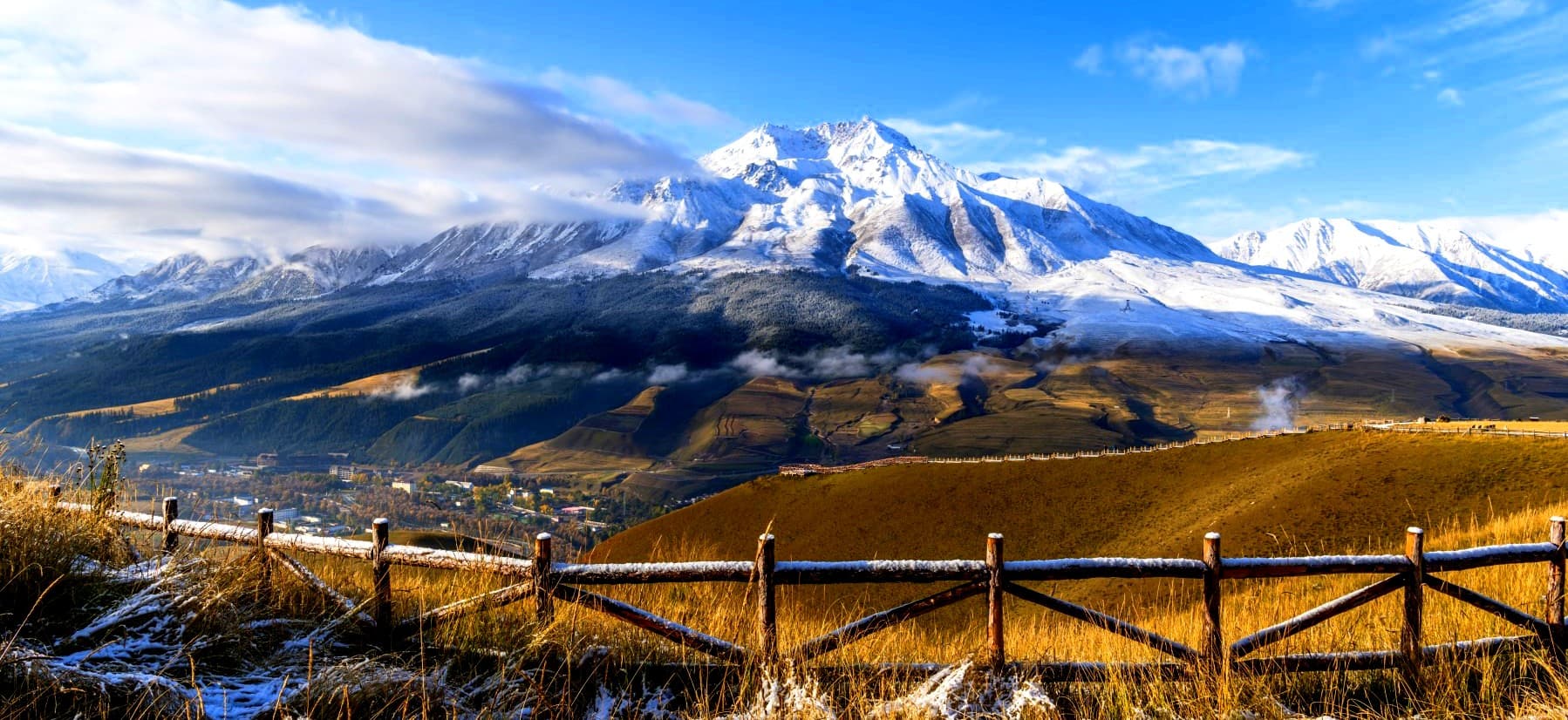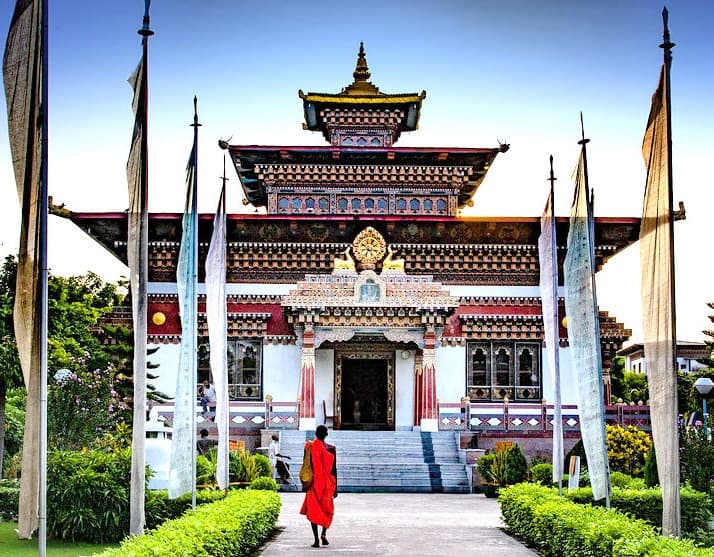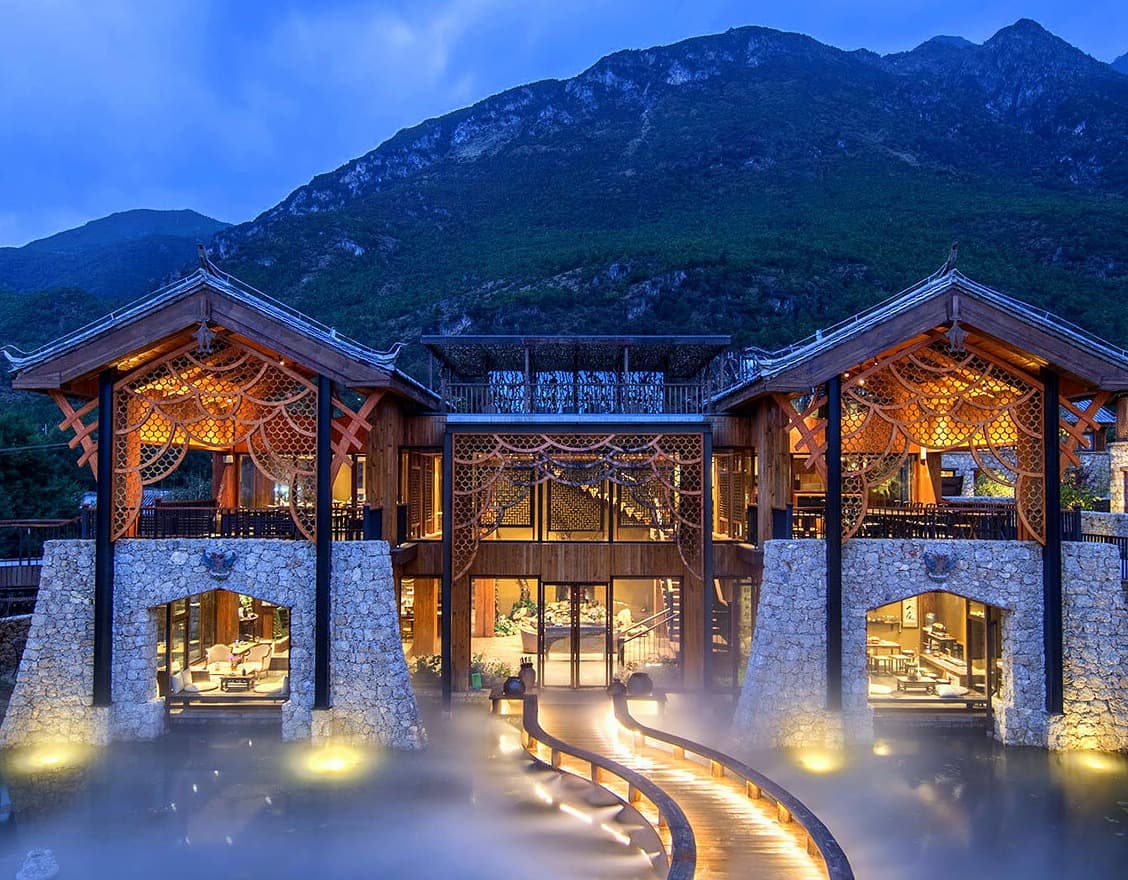Planning a trip to the mystical Tibet? Known as "The Roof of the World," this ultimate Tibet Travel Guide provides all the essential tips and information you need before setting off on your journey. From securing the necessary Tibet Travel Permit to choosing the best time to visit, this guide covers everything to ensure a smooth and memorable experience. Whether you're drawn to the spiritual majesty of Lhasa, the breathtaking routes of the Lhasa to Everest Base Camp Tour, or the serene beauty of the Tibetan landscapes, understanding the cultural nuances and travel requirements is crucial. Dive into our comprehensive guide to discover how to fully embrace and enjoy your high-altitude adventure in one of the most culturally rich and visually stunning regions of the world.
At Druk Holidays, we offer the essential Tibet Travel Guide to ensure you know everything necessary for a seamless journey to Tibet. Whether you need help arranging your Tibet Travel Permit, selecting the best time to visit, or planning your itinerary, including the famed Lhasa to Everest Base Camp Tour, our expertise ensures you have a well-informed, fulfilling trip. Trust Druk Holidays to guide you through the stunning landscapes and rich cultural tapestry of Tibet. With us, your adventure is not just a trip, but a gateway to experiencing the profound beauty and spirituality of this unique region.
Travel Requirements and Permits for Tibet
When planning a trip to Tibet, understanding the travel requirements and permits is crucial for a smooth experience. Here’s a detailed breakdown of what you need to know:
Tibet Travel Permit: The Tibet Travel Permit is essential for all foreign visitors planning to enter Tibet. This permit is issued by the Tibetan Tourism Bureau and can only be obtained through a registered travel agency. You cannot apply for this permit independently; it must be arranged through a tour operator that will also handle your itinerary in Tibet.
Chinese Visa: Before you can apply for the Tibet Travel Permit, you must first have a valid Chinese visa. It is recommended to obtain this visa without mentioning Tibet as your travel destination due to the sensitive nature of the region; simply list cities like Beijing, Shanghai, or Chengdu.
Additional Permits
Depending on your travel itinerary within Tibet, additional permits may be required:
- Alien’s Travel Permit: Needed if you plan to visit restricted areas outside of Lhasa, such as Shigatse, Tsedang, and Everest Base Camp.
- Military Area Permit: Required for travel to military-sensitive areas, which can include some remote regions near borders.
Process and Timing
- Application Process: Once you book a tour with a travel agency, they will ask for copies of your passport and Chinese visa to apply for the Tibet Travel Permit.
- Timing: It's best to start the permit application process at least one month before your intended travel date to Tibet. The actual permit can take anywhere from 10 to 15 days to be processed.
Important Tips
- Travel Restrictions: Traveling independently in Tibet is not allowed. You must be part of a guided tour arranged by a licensed travel agency.
- Permit Inspections: Your permits will be checked upon entering Tibet and at various checkpoints throughout your journey, so keep them accessible during your travels.
Understanding these requirements and ensuring all your documentation is in order will help facilitate a hassle-free entry to Tibet, letting you focus on the incredible cultural and natural beauty of the region.
Best Time to Visit Tibet
Choosing the right time to visit Tibet is essential for enjoying the region's stunning landscapes and cultural experiences to the fullest. Here’s what you need to know about the best times to plan your journey:
Optimal Seasons
-
Spring (April to June): Spring is a fantastic season to visit Tibet. The weather begins to warm, and the landscape bursts into bloom, making it an ideal time for photography and sightseeing. This period also avoids the heavy tourist influx of summer, offering a more serene experience at major attractions.
-
Summer (July and August): Summer is the peak tourist season in Tibet due to the warm weather and the convenience of summer holidays for many travelers. While you can enjoy vibrant festival activities and lush scenery, be prepared for occasional rain showers and larger crowds, especially in popular areas like Lhasa and Shigatse.
-
Autumn (September to October): Autumn is arguably the best time to visit Tibet. The weather is clear and stable, providing excellent conditions for trekking and outdoor activities. The visibility is also at its peak, offering breathtaking views of the Himalayas and particularly Mount Everest, which is crucial for trekkers heading to Everest Base Camp.
-
Winter (November to March): Winter in Tibet is cold, but it presents a unique opportunity to see the region without the crowds found during peak seasons. It's also a great time to experience Tibetan New Year celebrations. However, travelers should be prepared for very cold temperatures and the possibility of certain attractions being closed.
Considerations for Specific Activities
-
Trekking: For high-altitude treks, such as the Lhasa to Everest Base Camp Tour, the best times are late spring and early autumn when the weather is mild, and the skies are clear.
-
Cultural Experiences: Festivals like the Saga Dawa Festival and Shoton Festival occur in summer, offering deep insights into Tibetan Buddhism and local traditions.
-
Photography: For photographers, autumn provides vivid colors and clear skies, creating perfect conditions for capturing Tibet's stunning landscapes and vibrant cultural scenes.
By considering both the weather and the types of activities you are interested in, you can choose the best time to visit Tibet that aligns with your travel preferences and ensures a memorable and comfortable trip.
Key Destinations in Tibet
Tibet, with its stunning landscapes and rich spiritual heritage, offers a plethora of unforgettable destinations. Here’s a guide to the key places you should consider visiting during your trip to this remarkable region:
Lhasa
The heart and soul of Tibet, Lhasa is a city where every corner tells a story. Key sites include:
-
Potala Palace: The historic winter home of the Dalai Lamas, this iconic structure dominates the Lhasa skyline.
-
Jokhang Temple: Considered the most sacred and important temple in Tibetan Buddhism.
-
Barkhor Street: Encircling the Jokhang Temple, this bustling market area is great for experiencing Tibetan daily life and culture.
Shigatse
As Tibet’s second-largest city, Shigatse offers a mix of cultural history and stunning vistas, featuring:
-
Tashilhunpo Monastery: Founded by the First Dalai Lama, it’s a major center of learning and pilgrimage.
-
Mt. Everest Base Camp: Located near Shigatse, it serves as a base for those looking to ascend the world’s highest peak from the Tibetan side.
Gyantse
Known for its well-preserved medieval feel, Gyantse boasts:
-
Kumbum Stupa: This magnificent tiered stupa is one of the largest in Tibet and contains an impressive array of Tibetan Buddhist murals.
-
Gyantse Dzong: A historic fortress with panoramic views of the town and surrounding Nyangchu Valley.
Lake Namtso: One of Tibet’s three holy lakes, Lake Namtso is known for its crystal-blue waters and spectacular natural scenery, making it a perfect spot for spiritual contemplation and nature lovers.
Mount Kailash: Regarded as a sacred mount in multiple religions including Buddhism, Hinduism, Jainism, and Bon, Mount Kailash is an important pilgrimage site. The trek around the mountain is considered a spiritual journey and is known for its breathtaking views and transformative experiences.
Everest Base Camp: For adventure seekers, the Everest Base Camp on the Tibetan side offers a less crowded alternative to the Nepalese side, with dramatic views of the north face of Mount Everest. It's a must-visit for trekkers and mountaineers alike.
Yarlung Tsangpo Grand Canyon: For those interested in natural wonders, the Yarlung Tsangpo Grand Canyon offers some of the deepest and most dramatic river gorges in the world.
These destinations provide a comprehensive glimpse into the diverse landscapes and cultural richness of Tibet. Each location offers a unique perspective on Tibetan life, history, and spirituality, making them essential stops on any Tibetan journey.
Cultural Insights into Tibet
Tibet is a region with a rich and profound cultural heritage that has been shaped by Tibetan Buddhism along with influences from neighboring countries. Understanding these cultural nuances can greatly enhance your travel experience. Here are some key cultural insights to consider:
Importance of Buddhism: Tibetan Buddhism is the heart of Tibetan culture, influencing art, music, festivals, and daily practices. Key religious sites like Potala Palace, Jokhang Temple, and various monasteries are not only tourist attractions but also places of deep spiritual significance. Participating in or observing rituals and prayers can offer insights into the spiritual life of the Tibetan people.
Traditional Tibetan Festivals
Festivals play a crucial role in Tibetan society, showcasing local customs, traditional music, dance, and theatrical performances. Notable festivals include:
-
Losar (Tibetan New Year): This is the most important festival, celebrated with prayers, dances, and family gatherings.
-
Saga Dawa Festival: Marking the birth, enlightenment, and death of Buddha, this festival is celebrated with various religious activities and is a profound time for pilgrimage.
-
Shoton Festival: Celebrated in Lhasa with giant thangka display ceremonies and traditional opera performances.
Art and Crafts: Tibetan art is deeply religious, mainly comprising thangkas (paintings on fabric), statues, and murals that depict various deities and spiritual motifs. Handicrafts such as prayer wheels, jewelry, and carpets are also integral to Tibetan culture. Purchasing these handicrafts not only supports the local economy but also helps preserve traditional crafts.
Food and Cuisine: Tibetan cuisine is adapted to the high altitude and harsh climate. Staple foods include Tsampa (barley flour), yak butter tea, and momos (dumplings). Trying these local foods offers a direct connection to Tibetan culture and daily life.
Social Etiquette
Tibetans are known for their warmth and hospitality. Here are a few tips on etiquette:
-
Greeting: Traditional greetings involve placing the palms together in front of the chest and saying “Tashi delek”.
-
Respectful Behavior: When visiting religious sites, it is customary to walk clockwise around temples and stupas. Always ask for permission before taking photographs, particularly of people and inside monasteries.
-
Invitations: If invited to a Tibetan home, it is polite to bring a small gift, and when offered tea or food, it is customary to politely refuse at least once before accepting.
Environmental and Ethical Considerations: Given Tibet's fragile environment and the central role of Buddhism, which teaches respect for all living beings, visitors are encouraged to engage in responsible tourism practices. This includes minimizing waste, using resources sparingly, and respecting wildlife and natural landscapes.
Understanding and respecting these cultural practices and traditions will not only make your trip to Tibet more enjoyable but also help ensure that tourism has a positive impact on local communities and their environment.
Responsible Travel in Tibet
Traveling responsibly in Tibet is crucial due to its delicate ecosystem and the profound cultural significance of its heritage sites. Here’s how you can ensure that your visit is both enriching and respectful:
Minimize Environmental Impact
- Reduce Waste: Always carry out what you carry in, especially in remote areas and near key sights like Everest Base Camp. Use biodegradable or reusable materials whenever possible.
- Water Conservation: Water is a precious resource in high-altitude regions. Use it sparingly and consider using water purification tablets or a reusable water bottle with a filter instead of buying bottled water.
- Preserve the Natural Environment: Stick to established trails to avoid harming native flora. Avoid picking plants or disturbing wildlife.
Support the Local Economy
- Buy Local: Purchase goods and services from local businesses to help support the community. This includes eating at local restaurants, staying in locally owned accommodations, and buying handmade crafts and souvenirs directly from artisans.
- Hire Local Guides: Employing local guides not only provides you with invaluable insights into the local culture and landscapes but also supports the local economy.
Respect Cultural Traditions
- Educate Yourself: Learn about Tibetan culture, customs, and traditions before your visit. This knowledge will enrich your experience and help you avoid cultural faux pas.
- Dress Appropriately: When visiting religious sites, wear modest clothing that covers shoulders and knees. This shows respect for the local culture and religious practices.
- Cultural Sensitivity: Engage with the culture in a respectful manner. For instance, always ask permission before taking photographs of people or religious sites.
Ethical Interactions
- Respect Sacred Sites: Treat all religious and cultural sites with respect. Do not touch or remove religious objects, and follow any specific local rules regarding photography or behavior at these sites.
- Responsible Wildlife Interactions: If your travels involve wildlife watching (such as bird watching or visits to natural reserves), maintain a safe and respectful distance from animals. Avoid feeding wild animals, as this can alter their natural behaviors and diet.
Sustainable Travel Choices
- Transportation: Choose the most sustainable modes of transportation available. For example, consider carpooling or using electric vehicles when available for overland journeys.
- Accommodation: Opt for eco-friendly lodging that practices environmental conservation, such as energy conservation, recycling, and waste management.
By embracing these practices, travelers can help ensure that their visit contributes positively to the preservation of Tibet’s unique cultural and natural heritage, making responsible tourism a cornerstone of their experience in this extraordinary region.
Health and Safety in Tibet
Traveling to Tibet requires special attention to health and safety due to its unique high-altitude environment and remote location. Here are essential tips to ensure a safe and healthy journey:
Altitude Sickness
- Acclimatization: Spend a few days at a moderately high altitude to adjust before ascending to higher elevations. Lhasa, at about 3,650 meters (11,975 feet), is a common starting point for acclimatization.
- Symptoms of Altitude Sickness: Be aware of symptoms such as headaches, nausea, dizziness, and shortness of breath. If symptoms persist or worsen, descend to a lower altitude and seek medical help.
- Preventative Medications: Consult your doctor about medications like Acetazolamide (Diamox) to help prevent altitude sickness. Ensure you understand how and when to use them.
Medical Preparation
- Travel Insurance: Ensure you have travel insurance that covers high-altitude trekking and emergency medical evacuation, which can be critical in remote areas of Tibet.
- Health Check-Up: Visit your doctor to get a full health check-up before your trip, discussing any pre-existing conditions that might be affected by high altitudes.
- Vaccinations: Check with your healthcare provider for recommended vaccinations, typically including Hepatitis A, Hepatitis B, Typhoid, and Tetanus.
Food and Water Safety
- Safe Eating Practices: Avoid raw vegetables and unpeeled fruits unless you can peel them yourself. Stick to freshly cooked foods to reduce the risk of gastrointestinal infections.
- Water Safety: Drink only bottled or thoroughly boiled water. Using water purification tablets or a portable water filter can also be effective, especially in remote areas where bottled water may not be available.
General Safety Tips
- Emergency Contacts: Keep a list of emergency contacts, including local emergency services, your embassy, and your travel insurance company. Ensure your guide has these contacts if you are part of a tour.
- Local Laws and Customs: Familiarize yourself with local laws and customs. Understanding and respecting these can help avoid inadvertent offenses or legal problems.
- Travel in Groups: Especially in remote areas, travel with a guide or in a group. This not only enhances safety but also ensures that you have support in case of emergencies.
Personal Safety
- Weather-Appropriate Clothing: Dress in layers to manage the fluctuating temperatures. Ensure you have warm clothing and protection against wind and sun, which can be intense at high altitudes.
- Sun Protection: Use a broad-spectrum sunscreen, lip balm with SPF, and wear sunglasses with UV protection to guard against the strong sun exposure in high-altitude areas.
By preparing adequately and maintaining vigilance regarding health and safety, travelers can enjoy all that Tibet has to offer without unnecessary risks, making their trip both memorable and safe.
Traveling to Tibet offers an enriching and transformative experience that combines breathtaking natural beauty with deep spiritual heritage. By carefully preparing for the trip with the necessary permits, choosing the optimal travel times, exploring key destinations, and immersing yourself in the local culture, you can ensure a journey that is both memorable and respectful. Remember to prioritize health and safety, practice responsible tourism, and embrace the unique opportunities that come with visiting one of the most mystical places on Earth. Whether you are trekking to the majestic Everest Base Camp or wandering through the ancient streets of Lhasa, Tibet promises an adventure that will captivate your heart and enrich your soul.
FAQs for The Ultimate Tibet Travel Guide: What to Know Before You Go
Q: Do I need a visa to travel to Tibet?
A: Yes, all foreign travelers require a Chinese visa to enter Tibet. Additionally, you must obtain a Tibet Travel Permit and possibly other permits depending on your itinerary, which can only be arranged through a licensed travel agency.
Q: What is the best time to visit Tibet?
A: The best time to visit Tibet is during the spring (April to June) and autumn (September to October) when the weather is most favorable for travel. These periods offer clear, dry days ideal for sightseeing and trekking.
Q: How can I avoid altitude sickness in Tibet?
A: To minimize the risk of altitude sickness, acclimatize gradually by spending a few days at a lower altitude before ascending further. Stay hydrated, eat light but high-energy foods, and consider medication like Acetazolamide (if recommended by your doctor).
Q: What are the must-visit places in Tibet?
A: Must-visit places in Tibet include Lhasa (home to the Potala Palace and Jokhang Temple), Shigatse (location of Tashilhunpo Monastery), the Everest Base Camp from the north side, and Lake Namtso. Each offers unique insights into Tibet's culture and natural beauty.
Q: What should I pack for a trip to Tibet?
A: Pack clothing that can be layered for various weather conditions, comfortable hiking boots, sun protection (sunscreen, sunglasses, hat), essential medications, and personal hygiene supplies. Also, carry travel documents, including your passport, visa, and permits, at all times.
Q: Can I travel independently in Tibet?
A: No, independent travel is not permitted in Tibet. You must book your trip through an approved travel agency, which will arrange for a guide and all necessary permits.
Q: Are there any cultural practices I should be aware of when visiting Tibet?
A: Respect local customs and religious traditions. Dress modestly, especially at religious sites, walk clockwise around religious monuments, and always ask permission before taking photographs of people or sacred places.
Q: How do I respect Tibetan culture while visiting?
A: Engage with the culture respectfully by learning a few phrases in Tibetan, not touching or moving religious artifacts, and participating in local customs under the guidance of your tour guide.
Q: What are some tips for responsible travel in Tibet?
A: Support local economies by purchasing local crafts and dining at local establishments. Be environmentally conscious by minimizing waste, using water sparingly, and respecting wildlife and natural habitats.
Q: Is it safe to travel to Tibet?
A: Traveling to Tibet is generally safe, but it requires preparation, especially for handling high altitudes. Follow travel advisories, stay with your guide, and adhere to the advice on health and safety provided by your travel agency.



